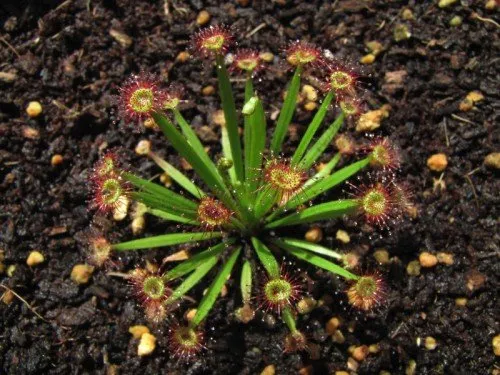I like carnivorous plants. I have always been fascinated by something with a little twist. They had to survive in poor soil which doesn't contain enough nitrogen or other nutrients, so they evolved in a way they can live on those nutrients from other sources than soil. They get those things from protein and things like that. Most carnivorous plants catch prey with their modified leaves.
Roughly speaking, there are 5 ways of catching prey which carnivorous plants have adopted. One way is to use pitcher-shaped traps with acidic liquid inside. Another way is to catch prey in clam-shaped snap traps. The third way is to stick prey with slimy acidic mucilage. The forth is to suck in microscopic animals with vacuum traps like a pipet. The last way is to trap microscopic animals inside spiral tubes.

Growing carnivorous plants isn't that difficult. A lot of carnivorous plants like sunlight and water, and some others not so much. Most of them need soft water. If your taps give hard water, you can get it from shops or just use stored rain water. Or you can use a reverse osmosis water softener.
Many people ask me this, but you don't really feed carnivorous plants. You can, but they can survive without it as long as they get enough water and sunlight. Some people might wonder if they can use carnivorous plants as pest control, but that's unfortunately not very likely. Those plants are not that proactive.
You don't need to fertilize the soil like ordinary garden plants, either, because that's the whole point of being carnivorous. And they are not used to rich soil any more anyway. Just use unfertilized media which tend to keep moisture because they mostly don't mind wetness. Actually some of them are even aquatic.
If you have access to abundant sunlight, your options are Drosera (Sundews), Dionaea (Venus Flytrap), Sarracenia (North American Pitcher Plants), Heliamphora (Sun Pitcher Plants), Byblis (Rainbow Plants), some kinds of Utricularia (Bladderworts), some kinds of Pinguicula (Butterworts), Cepalotus (Albany Pitcher Plant), Drosophyllum (Dewy Pine), etc. For shadier places, some kinds of Utricularia, some kinds of Pinguicula, or Nepenthes (Tropical Pitcher Plants) would be nice.